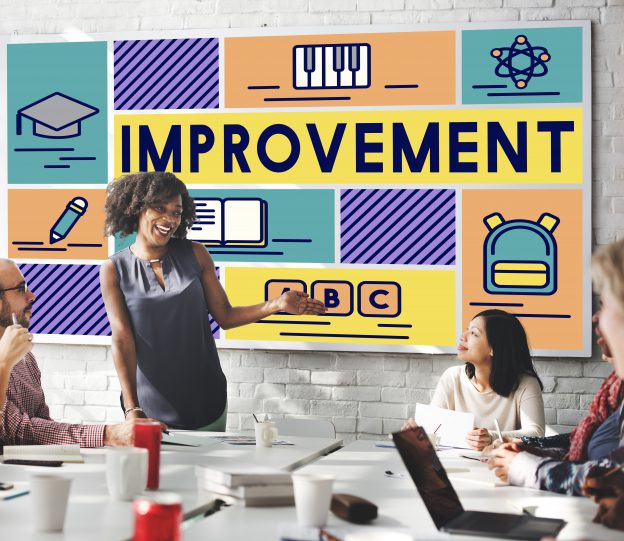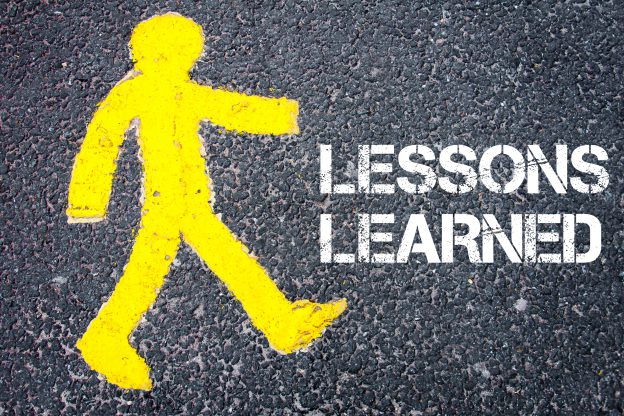How Top Performers Build-and-Support
Exemplary Models
by Bill Honig
School Districts
There are examples of stellar districts that have achieved successful results by following Build-and-Support ideas. These include Long Beach, Garden Grove, Sanger, Whittier High School, Elk Grove, the High-Tech High School Summit, and the Aspire charter school networks, all in California; Montgomery County, Maryland; and Union City, New Jersey. All have pursued this more comprehensive, positive approach for years and place in the top ranks of international assessments. Conversely, Dallas, Texas, and Newark, New Jersey, are examples of the damage caused by a full “reform” strategy and its failure to produce results.
Sanger’s journey—from a low-performing, high-poverty district suffering from substantial labor strife to a high-performing district where teachers and administrators have forged a close working relationship—demonstrates the power of the Build-and-Support strategy. Ironically, as a prime example of the deleterious effect of federal policy, in 2014 Sanger accepted a federal waiver under duress to avoid the severe penalties of NCLB (imposed by the feds even though Sanger grew faster than almost every other district in the state). However, district leaders then became worried that forced implementation of a test-driven evaluation would reverse its successful collaboration efforts. The problem should be solved in 2016 when the new ESSA measure becomes operative and when required high-stakes evaluation of teachers can no longer be mandated.
Similarly, Long Beach Unified School District, identified as one of the three top school jurisdictions in the country and among the top 20 in the world, has been building professional capacity around a strong, core curriculum for several decades with significant results. According to its superintendent, Chris Steinhauser, Long Beach’s success stems from its attention to human and social capital development, including clinical experiences for new teachers; treating educators, parents, and community members with respect and trust; providing extensive coaching support for teachers and principals; orienting the district administrators to support schools; building teams at schools; implementing a strong liberal arts curriculum with a districtwide focus; developing cooperation with colleges and community organizations; and continuing a shared focus by all on instructional and curricular quality. Again, Long Beach has had consistent leadership for the past two decades under Carl Cohn (1992–2002) and Superintendent Steinhauser (2002–present). Long Beach has pursued educational improvement by developing a districtwide strategy that engages all teachers and schools in the effort as opposed to a punitive approach aimed at the lowest-performing schools. For why this is important, see Fiske and Ladd’s comments. Finally, Long Beach has struck the right balance between school and teacher autonomy and district leadership, which is crucial in allowing each school to implement improvement efforts in its own way while adhering to an overall district strategy. For a perceptive article on this issue, see Larry Cuban’s blog.
Another example is Garden Grove, which has one of the largest percentage of English-language learners in large districts in California yet has improved performance substantially in the last 15 years. Under the exemplary leadership of Laura Schwalm, superintendent from 1999 to 2013, and Gabriela Mafi since 2013, the district, among other Build-and-Support measures, has developed a robust human resources development program with two aspects. First, the district finds and keeps the best teachers by developing effective systems of recruiting, proper placement, inducting, granting tenure, and compensation. Second, it builds the capacity of current staff by comprehensive professional development, creates effective school site teams, and offers career advancement pathways that allow our best teachers a hybrid teaching and leadership role and the possibility of higher earnings.
These successful jurisdictions don’t ignore accountability. But effective accountability must not rely solely or primarily on test scores. It should be designed around providing useful, timely feedback that will assist school, district, and local community efforts in improving instruction and student performance. And it should assiduously avoid causing the type of extensive collateral damage we have seen under high-stakes testing: narrowing the curriculum, discouraging cooperation, and emphasizing looking good on tests rather than providing quality instruction.
This more supportive philosophy guides the accountability system being developed in California and many other states. The state will be establishing an integrated hybrid of state and local indicators such as graduation rates, college preparation, career preparation, passing advanced placement courses, curriculum breadth and depth, student and teacher engagement, school climate, student suspensions or teacher absences, reclassification rates for English-language learners, and implementation and team-building efforts. The main locus of accountability is the school and district with local community participation, under the assumption and trust that the professionals in the school, not the federal government or the state, will be the driving force for improvement if they have the support they need. For an up-to-date report on these broader accountability ideas, see a 2016 paper by Linda Darling-Hammond and colleagues, Pathways to New Accountability Through the Every Student Succeeds Act. In addition, see a 2016 report by Cook-Harvey and Stosich of the Stanford Learning Policy Institute, Redesigning School Accountability and Support: Progress in Pioneering States.
Data based on reasonable student testing and just-in-time student assessment are helpful when such data provide information back to the teachers, schools, and local communities to assist their continuous improvement efforts. California is a member of the Smarter Balanced Assessment Consortium (SBAC) and administered the first state assessments in 2015. However, results won’t be used for accountability purposes until enough data are available for growth measures and potential targets can be validated. The state also wants to give teachers a chance to implement the curricular changes envisioned by the Common Core State Standards (CCSS). However, as mentioned above, these end-of-year, broad-scale tests should be only one part of a broader accountability system and need to be combined with more sophisticated, accurate, and authentic measures of student performance such as end-of-course and periodic assessments, passing competency-based measures such as certificates, performances, portfolios, and projects.
Furthermore, state and district policy should recognize that negative fallout from testing is minimized if tests are not used primarily for formal, high-stakes teacher or school evaluations or to assess school progress toward impossible goals established by political entities that are far removed from the facts on the ground. Test results are most useful when viewed as one aspect of the main driver of improvement—a broad, collaborative, well-resourced effort to improve school, student, and teacher performance over the long haul.
There will be schools that struggle and need assistance. Site visits and support need to be organized, as envisioned by the new California Collaborative for Educational Excellence. The group will offer help, support, and site visits to struggling schools. For a national proposal along these lines, see Marc Tucker’s blog post “ESEA Reauthorization and Accountability: A Chance to Do It Right.”
Successful jurisdictions do not neglect the problem of incompetent teachers. It turns out that giving low-performing teachers a chance to improve is more effective when the efforts are part of a cooperative endeavor to improve instruction. First, many low-performing teachers will improve with helpful support. Second, low performers cannot easily hide in their classrooms if a concerted team effort is under way. For many, the exposure pushes them to improve or resign. California districts such as Long Beach, San Jose, and Garden Grove, as well as places such as Montgomery County, Maryland, and Massachusetts, are examples of jurisdictions that have embedded teacher evaluations in a broader instructional improvement effort, obtained union and teacher support, and used peer review techniques. They have found that this approach has proved more successful in dismissing or counseling out the worst teachers who cannot or will not improve, with considerably less collateral damage than the traditional method that relies entirely on a negative, high-pressure strategy.
A 2016 Aspen Institute report, Teacher Evaluation and Support Systems: A Roadmap for Improvement, chronicles exemplary practices in the nation exemplifying this more supportive approach.
Nations and States
What have the most successful nations and states done to improve student performance?
On the world stage, high-performing Finland had a mediocre system two decades ago. It initiated a long-term positive engagement strategy and revitalization of the teaching force and now substantially outscores Norway, which has a similar population and demographics but is stuck in a test-driven accountability mode. Finnish Lessons 2.0: What Can the World Learn from Educational Change in Finland? is one of the best books on the topic. The author is Pasi Sahlberg, one of the primary leaders of the reforms.
William Doyle spent a year on a Fulbright scholarship studying the Finnish success story. He writes of a fantastic school in rural Finland and conversations with one of its top teacher educators. He contrasts the Finnish attention to revitalizing the teaching profession to the prevailing conventional “reform” strategy in this country:
[I]n the U.S., instead of control, competition, stress, standardized testing, screen-based schools and loosened teacher qualifications, try warmth, collaboration, and highly professionalized, teacher-led encouragement and assessment.
I should note, however, that Finland has stalled or declined in recent Program for International Student Assessment (PISA) and Trends in Mathematics and Science Study (TIMSS) tests. For a contrary view of Finland’s rise and recent stall or decline, see The Real Finnish Lessons: The True Story of an Education Superpower. The author attributes Finland’s past successes not to its education initiatives, but to the prominence teachers always enjoyed in that country as nation builders, the determination of families stemming from Finland’s recent industrialization, and traditional teaching methods. The author further argues that the abatement of these factors is causing Finland’s test results to decline. This report was prepared by a conservative think tank in England created by Margaret Thatcher, comparable to our Hoover Institution. The author doesn’t think much of student or teacher collaboration. But there has been a raft of studies showing that collaboration among teachers and improving social capital and the prestige of the profession do make a significant difference. It will be interesting to see the analysis of this contrarian position.
In Canada, the province of Ontario has followed the same successful trajectory—revitalizing the teaching profession, creating effective professional learning communities at each school around teaching a vigorous curriculum, and using the capacity-building approach. The result was a substantial improvement in student performance. Poland has undergone a similar transformation using team building and continuous improvement strategies to boost performance. Also, Poland has chalked up enviable progress, as described in Amanda Ripley’s book The Smartest Kids in the World: And How They Got That Way. (Ripley visited three foreign countries for examples of world-class educational efforts—it’s a shame she didn’t visit comparable examples—in the US, for example, Massachusetts.) Many Asian countries such as Japan, Korea, and Singapore and the city of Shanghai are among the highest performers in the world. All have been implementing continuous improvement strategies for decades. See, for example, Developing Shanghai’s Teachers. On the flip side, Chile and Sweden adopted wholesale charter and voucher approaches and suffered severe negative consequences.
There are many success stories closer to home, but, unfortunately, they are the exception not the rule. Massachusetts is a poster child for why Build-and Support works. Over the past 20 years, the state has consistently pursued the comprehensive positive approach engaging, not vilifying, educators. It placed instruction at the core of its reforms, built capacity around improving classrooms and schools, upgraded the quality of the teaching force, and substantially increased funding. The Commonwealth carefully avoided most of the extreme reform approaches such as widespread charterization, attacking unions and weakening due process protections, and adopting punitive measures. Most importantly, Massachusetts has stayed the course for nearly two decades.
Specifically, in 1993 under the leadership of Commissioner of Education David Driscoll, the Bay State approved standards and curricular frameworks, developed an assessment system geared toward instructional improvement based on those standards and frameworks, organized professional development around the documents, raised requirements for graduation, installed rigorous charter school evaluations for approval, and initiated more stringent requirements and support for incoming teachers. Policymakers in Massachusetts also insisted that teachers earn a master’s degree over the course of their careers. (For a comparison with Finnish initiatives, see Lisa Hansel’s post “Seeking Confirmation” on the Core Knowledge blog.)
As a result, Massachusetts scores number one in our national NAEP scores by a wide margin. In international assessments it ranks right near the top in math and science, and at the top in mathematics in growth and performance level. Yes, it is home to numerous universities with high-level candidates who pursue teaching careers, a well-educated population, and a history of educational excellence, but such benefits aren’t enough to explain its phenomenal world-class performance. Why the Massachusetts model has not become the guide for national and other states’ improvement efforts, as Marshall Smith suggested several years ago, is bewildering.
Reference Notes
School Districts
Ravitch, D. (2015, Jun 23). Mike Miles Resigns as Dallas Superintendent. http://dianeravitch.net/2015/06/23/breaking-news-mike-miles-resigns-as-dallas-superintendent/
David, J. L., & Talbert, J. E. (2012). Turning Around a High-Poverty School District: Learning from Sanger Unified’s Success. http://web.stanford.edu/group/suse-crc/cgi-bin/drupal/publications/report
Amadolare, S. (2014, Feb 27). Which Is Worse? A California District Makes a Tough Choice Between No Child Left Behind and Obama Education Policies. http://hechingerreport.org/which-is-worse-a-california-district-makes-a-tough-choice-between-no-child-left-behind-and-obama-education-policies/
Long Beach Unified School District. About Long Beach Unified School District. http://www.lbschools.net/District/
Mongeau, L. (2016, Feb 2). How One California City Saved Its Schools. http://hechingerreport.org/how-one-california-city-saved-its-schools/
Steinhauser, C. (2015). Personal conversation with author. See also Freedberg, L. (2016, Feb 22). State Must Adopt Guidelines for Parent Engagement in Schools. http://edsource.org/2016/report-state-must-adopt-guidelines-for-parent-engagement-in-schools/95124?utm_source=Feb.+23+daily+digest+–+Michael&utm_campaign=Daily+email&utm_medium=email
Fiske, E. B., & Ladd, H. F. (2016, Feb 13). Learning from London About School Improvement. The News & Observer. http://www.newsobserver.com/opinion/op-ed/article60118256.html
Cuban, L. (2016, Feb 17). Reflecting on School Reforms: Scaling Up versus Short, Happy Life or Hanging In. https://larrycuban.wordpress.com/2016/02/17/reflecting-on-school-reforms-scaling-up-versus-short-happy-life-or-hanging-in/
Knudsen, J. (2013, Sep). You’ll Never Be Better Than Your Teachers: The Garden Grove Approach to Human Capital Development. http://www.cacollaborative.org/publications
Darling-Hammond, L., Bae, S., Cook-Harvey, C.M., Lam, L., Mercer, C., Podolsky, A., & Stosich, E. (2016, Apr). Pathways to New Accountability Through the Every Student Succeeds Act. Learning Policy Institute. https://learningpolicyinstitute.org/our-work/publications-resources/pathways-new-accountability-every-student-succeeds-act/
Cook-Harvey, C. M., & Stosich E. L. (2016, Apr 5). Redesigning School Accountability and Support: Progress in Pioneering States. Stanford Center for Opportunity Policy in Education. https://edpolicy.stanford.edu/publications/pubs/1406
Tucker, M. (2015, Dec 3). ESEA Reauthorization and Accountability: A Chance to Do It Right. http://blogs.edweek.org/edweek/top_performers/2015/12/esea_reauthorization_and_accountability_a_chance_to_do_it_right.html
Brown, C., Partelow, L., & Konoske-Graf, A. (2016, Mar 16). Educator Evaluation: A Case Study of Massachusetts’ Approach. https://www.americanprogress.org/issues/education/report/2016/03/16/133038/educator-evaluation/
Thompson, J. (2015, Mar 30). John Thompson: A Teacher Proposes a Different Framework for Accountability. https://educationpost.org/john-thompson-a-teacher-proposes-a-different-framework-for-accountability/
The Aspen Institute. (2016, Mar). Teacher Evaluation and Support Systems: A Roadmap for Improvement. http://www.aspendrl.org/
Nations and States
Hancock, L. (2011, Sep). Why Are Finland’s Schools Successful? Smithsonian Magazine. http://www.smithsonianmag.com/innovation/why-are-finlands-schools-successful-49859555/?no-ist=
Sahlberg, P. (2015). Finnish Lessons 2.0: What Can the World Learn from Educational Change in Finland? New York: Teacher’s College Press.
Doyle, W. (2016, Feb 18). How Finland Broke Every Rule—and Created a Top School System. http://hechingerreport.org/how-finland-broke-every-rule-and-created-a-top-school-system/
Sahlgren, G. H. (2015, Apr). Real Finnish Lessons: The True Story of an Education Superpower. Centre for Policy Studies. http://www.cps.org.uk/publications/reports/real-finnish-lessons-the-true-story-of-an-education-superpower/
Ripley, A. (2014). The Smartest Kids in the World: And How They Got That Way. New York: Simon & Schuster.
Tucker, M. (2016, Feb 29). Asian Countries Take the U.S. to School. The Atlantic. http://www.theatlantic.com/education/archive/2016/02/us-asia-education-differences/471564/
Zhang, M., Ding, X., & Xu, J. (2016, Jan). Developing Shanghai’s Teachers. http://www.ncee.org/developing-shanghais-teachers/
Alliance for Excellent Education. David Driscoll. http://all4ed.org/people/david-driscoll/
Chang, K. (2013, Sep 2). Expecting the Best Yields Results in Massachusetts. The New York Times. http://www.nytimes.com/2013/09/03/science/expecting-the-best-yields-results-in-massachusetts.html?pagewanted=all&_r=0 See also Khadaroo, S. T. (2012, Sep 5). Is Top-Ranked Massachusetts Messing with Education Success? The Christian Science Monitor. http://www.csmonitor.com/USA/Education/2012/0905/Is-top-ranked-Massachusetts-messing-with-education-success
Hansel, L. (2015, Jul 9). Seeking Confirmation. http://blog.coreknowledge.org/2015/07/09/seeking-confirmation/?utm_source=feedburner&utm_medium=email&utm_campaign=Feed%3A+TheCoreKnowledgeBlog+%28The+Core+Knowledge+Blog%29
Carnoy, M., García, E., & Khavenson, T. (2015, Oct 30). Bringing It Back Home: Why State Comparisons Are More Useful Than International Comparisons for Improving U.S. Education Policy. Economic Policy Institute. http://www.epi.org/publication/bringing-it-back-home-why-state-comparisons-are-more-useful-than-international-comparisons-for-improving-u-s-education-policy/
 Building Better Schools
Building Better Schools


